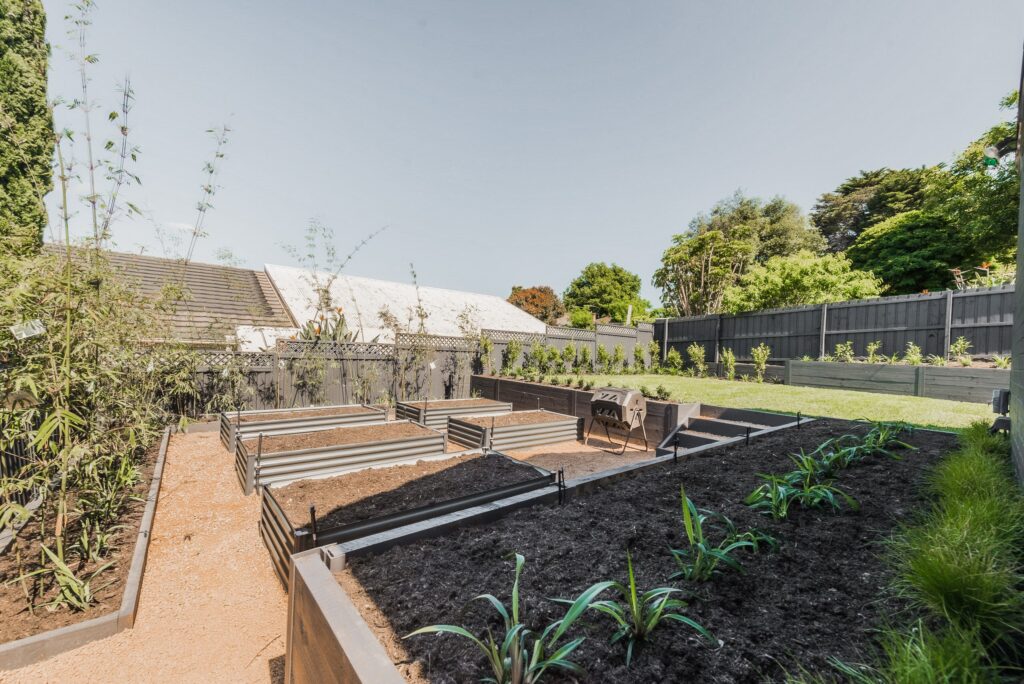At OasisLiving, we understand what unpredictable weather and general wear and tear can do to your lush green lawn. Weeds and bare patches can spoil the appearance of your garden. But with a bit of effort and the right approach, you can revamp your lawn and bring it back to its former glory.
Follow this 8 steps guide to restore your lawn:
- Assess the Damage and Diagnose The Problem
Before you map out the repair process, diagnose the lawn problem first! Take a good look at your lawn to assess the extent of damage. Identify the types of weeds present and the size and number of bare patches.
This initial assessment will help in determining the best course of action and the materials you’ll need to repair the lawn. For instance, if the issue is with soil quality, the fertilisers you’ll need and if it’s dry and, ways to improve mulching.
- Remove Weed and Debris
To start with, remove and clear any debris such as leaves, twigs, dead grass and weeds. Use a rake to gather the debris and dispose of it. To tackle weeds, use the following methods:
- For fewer weeds, hand-pulling or using a weeding tool can be effective. Ensure to remove weeds from the roots.
- For larger infestations, use an organic herbicide that doesn’t harm the grass and targets weeds.
- If you wish to use natural remedies, use vinegar solution or boiling water to kill weeds. Be cautious while using these methods as they can harm the grass.
- Aerate the Soil
Aerating the lawn helps in loosening the soil, improving drainage and allowing nutrients to penetrate more effectively. Always ensure that soil is not compacted as it can lead to poor grass growth and weed problems. Consider using these methods to aerate your lawn:
- For smaller lawns, a garden fork or a handheld aerator is suitable.
- For bigger lawns, rent a mechanical aerator. It will do the job quicker and more efficiently.
- Test and Amend the Soil
The next step is to test and assess the soil’s condition, pH, and nutrient level. It will give a better idea of what the soil needs for better quality. To pursue testing, buy a soil test kit that is widely available, both offline and online. Once you’ve done the testing:
- Adjust the pH of the soil according to the level. Sulphur can be used to decrease the alkaline state of the soil. And if it’s acidic, try adding lime to it.
- For insufficient nutrients, use a balanced fertiliser. Organic options like compost or rotted manure are excellent choices for enriching soil with desired nutrients.
- Reseed Bare Patches
Once the soil is prepared, it’s time to reseed the bare patches. Follow the given steps:
- Choose a grass seed that’s suitable for your lawn conditions and the climate.
- Remove any debris that’s present, rake the soil lightly, and level the surface.
- Distribute seeds evenly over bare patches. Use a seed spreader if needed.
- Lightly rake the soil again to mix the seeds with the top layer.
- Water the soil daily and keep it consistently moist until the new grass is established.
- Fertilise
The next step is to fertilise and feed your lawn. It is crucial for promoting healthy growth and preventing weeds from growing. Choose a high-quality fertiliser according to your lawn conditions and apply it using the given instructions.
One point that merits consideration is to avoid fertilising during hot and dry weather as it further stresses the grass.
- Mow Correctly
Proper mowing practices are essential for maintaining a healthy lawn. Mowers are widely available depending on your requirements. Here are some useful tips for mowing your lawn correctly:
- Taller grass shades the soil, reduces weed growth and promotes deeper roots. Set your mower blades to a height of about 2.5 to 3 inches.
- Mow your lawn at regular intervals. It will keep your lawn neat and reduce stress on the grass.
- Always keep mower blades sharp as dull blades can tear the grass, leading to ragged edges.
- Maintain Regular Care
Once your lawn is back in shape, be sure to establish a routine that includes:
- Watering: Make sure that your lawn gets about one inch of water every week.
- Fertilising: Fertilise the soil according to the requirements.
- Weeding: Monitor and remove weeds at regular intervals.
- Aeration and seeding: Aeration and seeding is necessary to maintain soil health.
Sustainable Tips for a Healthy Lawn
Here are some extra tips that will help with the maintenance of your beautiful lawn:
- Soil Testing: Do a soil test to determine its fertility and pH levels. It will help in choosing the right fertiliser.
- Mulching Mower: Try using a mulching mower. It returns the finely chopped grass to the lawn and thus provides natural fertilisation.
- Lawn Edging: Define the lawn edges and keep them neat. It enhances the overall appearance while preventing grass from invading flower beds and pathways.
- Organic Products: To reduce chemical usage and its impact on the environment, try using organic fertilisers and pest control products.
- Water Conservation: Use a water-efficient sprinkler system and install a system for rainwater collection that can be used for lawn care.
Conclusion
Restoring your lawn that’s riddled with weeds and bare patches can take time and effort, but the results will be rewarding. By following the guidelines mentioned above, you can achieve a beautiful, lush lawn that withstands climate change. But, remember, consistency is the key! It requires constant maintenance and gardening to prevent problems from reoccurring.
Oasis Living wishes you happy gardening!




